Erica Vetsch's Blog, page 38
March 26, 2022
Sunday Scripture & Prayer Requests
FOURTH SUNDAY OF LENT
 The Return of the Prodigal Son (1773) by Pompeo Batoni,
The Return of the Prodigal Son (1773) by Pompeo Batoni,
Germany. [PD-US]
Tax collectors and sinners were all drawing near to listen to Jesus,
but the Pharisees and scribes began to complain, saying,
“This man welcomes sinners and eats with them.”
So to them Jesus addressed this parable:
“A man had two sons, and the younger son said to his father,
‘Father give me the share of your estate that should come to me.’
So the father divided the property between them.
After a few days, the younger son collected all his belongings
and set off to a distant country
where he squandered his inheritance on a life of dissipation.
When he had freely spent everything,
a severe famine struck that country,
and he found himself in dire need.
So he hired himself out to one of the local citizens
who sent him to his farm to tend the swine.
And he longed to eat his fill of the pods on which the swine fed,
but nobody gave him any.
Coming to his senses he thought,
‘How many of my father’s hired workers
have more than enough food to eat,
but here am I, dying from hunger.
I shall get up and go to my father and I shall say to him,
“Father, I have sinned against heaven and against you.
I no longer deserve to be called your son;
treat me as you would treat one of your hired workers.”’
So he got up and went back to his father.
While he was still a long way off,
his father caught sight of him, and was filled with compassion.
He ran to his son, embraced him and kissed him.
His son said to him,
‘Father, I have sinned against heaven and against you;
I no longer deserve to be called your son.’
But his father ordered his servants,
‘Quickly bring the finest robe and put it on him;
put a ring on his finger and sandals on his feet.
Take the fattened calf and slaughter it.
Then let us celebrate with a feast,
because this son of mine was dead, and has come to life again;
he was lost, and has been found.’
Then the celebration began.
Now the older son had been out in the field
and, on his way back, as he neared the house,
he heard the sound of music and dancing.
He called one of the servants and asked what this might mean.
The servant said to him,
‘Your brother has returned
and your father has slaughtered the fattened calf
because he has him back safe and sound.’
He became angry,
and when he refused to enter the house,
his father came out and pleaded with him.
He said to his father in reply,
‘Look, all these years I served you
and not once did I disobey your orders;
yet you never gave me even a young goat to feast on with my friends.
But when your son returns
who swallowed up your property with prostitutes,
for him you slaughter the fattened calf.’
He said to him,
‘My son, you are here with me always;
everything I have is yours.
But now we must celebrate and rejoice,
because your brother was dead and has come to life again;
he was lost and has been found.’”
Luke 15:1-3, 11-32
The Seekerville bloggers are praying for YOU and for our entire blog community. If you have any special intentions that need additional prayer coverage, leave a request for prayer in the comment section below.
Please join us in praying for our country, for the people of Ukraine, for an end to Russian aggression, and for the protection of our military.GOD BLESS THE USA!
We are so grateful for all of you—for your friendship and your support!
May the Lord bless you and keep you safe.
March 25, 2022
Weekend Edition

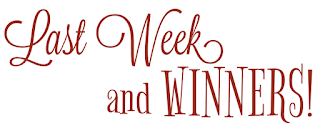
If you are not familiar with our giveaway rules, take a minute to read them here. It keeps us all happy! All winners should send their name, address, and phone number to claim prizes. Please send to Seekerville2@gmail.com. If the winner does not contact us within two weeks, another winner may be selected.
Monday: Jan
Wednesday: Cate
Friday: Pam
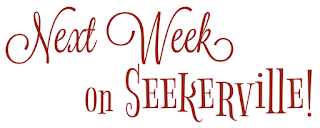
Monday: Erica is bringing us an interview with author and cover art designer, Hannah Mae Linder, where Hannah will walk us through the process of creating a book cover! (With a stunning example! :) )
Wednesday: Dawn Ford is asking: What’s It Take To Get It Right? Her adventure to publish her fantasy YA Novel. Stop by and leave a comment for a chance to win a copy of her soon-to-be-released book! Friday: Cathy Gohlke joins Seekerville to talk about building bridges and her upcoming release, A Hundred Crickets Singing. Stop by and share your thoughts for a chance to win a copy.

COVER REVEAL
SOLDIER PROTECTORa 2-IN-1 that featuresThe Officer's Secret and The Soldiers Sisterby Debby GiustiReleasing June 2022
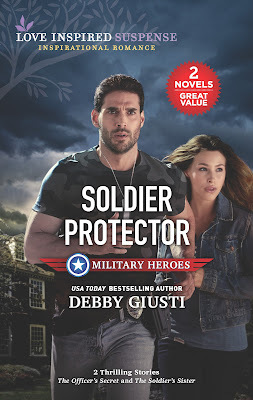

When Telling Trumps Showing by Angela Ackerman at Writers Helping Writers
The Rise of Closed-Door Romance by Rachel McMillan at Writers Digest Blog
Are You Drowning Your Story in Imagery by Dave King at Writer Unboxed
Embracing Messy & Inconsistent Journaling by Kat Cuthbert at The Bullet Journal
How to Promote Any Book with BookBub Ads by Carlyn Robertson at BookBub
How to Describe a Location You've Never Visited by Angela Ackerman at Writers Helping Writers
Hero vs Heroine: Why They're Not The Same by Lewis Jorstad at The Novel Smithy
Everything You Need to Know About Author Websites by CS Lakin at Live Write Thrive
Most Common Writing Mistakes by KM Weiland at Helping Writers Become Authors
Dipping the Quill Deeper: A Question of Worth by Eva Marie Everson at The Write Conversation
March 24, 2022
If the Shoe Fits
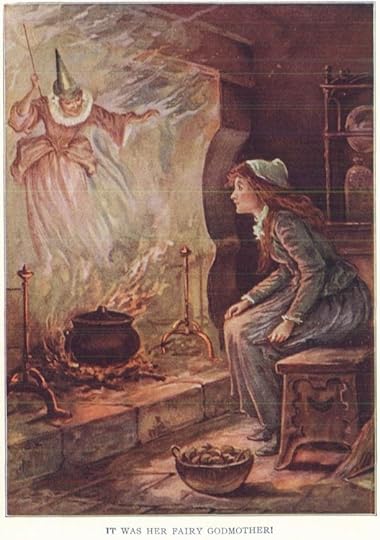 Oliver Herford, Public Domain
Oliver Herford, Public DomainYour synopsis is the shoe, your story is the foot. Stick with me now…
So, you’re working on your first (or next) Great American Novel. You’ve written the first few chapters, and you’re dipping your toes into contests and even getting brave and submitting to agents and editors. Or, you might even be selling on proposal, a short synopsis and a chapter or two.
If you’re at this stage of the writing game, then you’ve written the dreaded synopsis. There are great articles here in Seekerville and all over the ‘net to help you determine what goes into a synopsis and what doesn’t, so I’m not going to rehash that today.

But what I am going to address is whether your synopsis reflects the story you’re writing. Sometimes we writers—intentionally or maybe unintentionally— sensationalize our synopsis to the point that it doesn't even resemble the actual chapters, similar to the practice of padding a resume.
How many times have I dumped every conceivable plot device into my synopsis because a critique partner or contest judge suggested it, and I thought it would be cool? I wonder how many times I gave the "snake oil" sales pitch in the synopsis, but the story didn't live up to the synopsis and that's why contest judges and editors said no?
Some examples to make my point…
If I write a synopsis that sounds like a very dark 90K romance that deals with drunk driving, a family feud, long-lost love, and two main characters dealing with all this traumatic back story, but if my opening chapters feel and sound like a 20K novella, there’s a disconnect somewhere.
Or, how about this…
If my synopsis describes the lives of Bonnie and Clyde, but my chapters are the light-hearted, knee-slapping antics of Lucy and Desi, I’ve got a problem.
The best example I can give of my own writing would be my debut novel, Stealing Jake. Stealing Jake started out as a light, sweet novella and went through several rewrites that kept upping the tension.
If I had sent the lighter novella version of the story in with a synopsis detailing shipping street kids across the country in crates, sweat shops, a coal mine explosion, the traumatic incidents from both the hero and the heroine’s pasts, it just wouldn't have really worked together. And I’m afraid it would have tanked in contests, as well as been rejected by industry professionals.
It’s important to make sure a contest judge, critique partner, agent or editor gets the same jolt from the chapters as they do from the synopsis. Either the tension in the chapters need to be ratcheted up, or the tension in the synopsis ratcheted down. And, you, as the author, are the only one who knows which direction you need to turn the ratchet.

So, how do you do that?
Is your manuscript in the early stages or is it completed? If it’s completed, then you’re ahead of the game. Write your synopsis to fit the story and you're good. If you’ve just started this story, determine the genre and the tone. Do you write light-hearted contemporary romance, or dark historicals, or women’s fiction with snarky leads?
Read books that are similar to what you write, then describe them in your own words, just like giving a book report. See if you can hit the tone of these books. And, as an additional exercise, maybe look at some good professional reviews of those books. Do some of them describe whether the book was light, or dark? Do you agree with the assessment?
If you have a critique partner, let them read both. If they’ve worked with you a long time, they might be able to tell you if the two pieces are simpatico.
And, lastly, trust yourself. If you got it wrong, it’s not the end of the world. Just keep tinkering with it. Eventually, you’ll get it. Over the years, I've submitted multiple proposals for historical romance novellas to Barbour Publishing. The proposals were extremely short, but I’ve been writing historical romance for a long time, and I’ve written a lot of proposals for novellas, and read my fair share.
I knew enough about the process to keep the synopsis sharp, clean, and free of secondary plots. I sold FOUR proposals to Barbour in one year because I nailed the synopsis. As expected, the novellas have a lighter tone than my full-length novels, and the one (Shanghaied by the Bride) even had a bit more of a humorous tone than is my norm, something that was clearly spelled out in the synopsis and was also clear in the title, which Barbour kept.
Bottom line, know the story you want to tell well enough to make the synopsis fit.
Otherwise, that shoe's really gonna pinch.

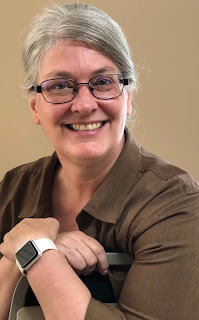 Pam Hillman was born and raised on a dairy farm in Mississippiand spent her teenage years perched on the seat of a tractor raking hay. In those days, her daddy couldn’t afford two cab tractors with air conditioning and a radio, so Pam drove the Allis Chalmers 110. Even when her daddy asked her if she wanted to bale hay, she told him she didn’t mind raking. Raking hay doesn’t take much thought so Pam spent her time working on her tan and making up stories in her head. www.pamhillman.com
Pam Hillman was born and raised on a dairy farm in Mississippiand spent her teenage years perched on the seat of a tractor raking hay. In those days, her daddy couldn’t afford two cab tractors with air conditioning and a radio, so Pam drove the Allis Chalmers 110. Even when her daddy asked her if she wanted to bale hay, she told him she didn’t mind raking. Raking hay doesn’t take much thought so Pam spent her time working on her tan and making up stories in her head. www.pamhillman.comMarch 23, 2022
Learning Craft From Children's Books - Part 2
As I mentioned in an earlier post, I was summoned out of retirement to fill in for the rest of the year after a teacher abruptly quit. The good news is I am loving the experience. The bad news is it leaves little time for writing.
However, sometimes my worlds align. This happened recently when we had an author visit to the classroom. The author, Sarah Scheerger, wrote a book called Operation Frog Effect. It's a middle grade book about a fifth grade class told as journal entries their teacher assigned. My students loved the story and were so enthusiastic about the opportunity to ask the author questions.
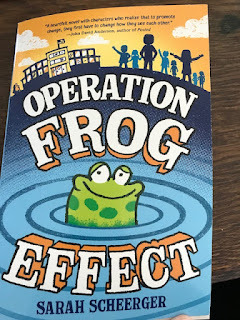
I loved seeing their enjoyment, but I particularly appreciated Sarah's discussion of author's craft, so I thought I'd talk a little about that today.
Operation Frog Effect is told from NINE points of view. Eight of them are students and one is the teacher. Sarah did a really effective job of differentiating the characters, and she explained to the students how she did it.
One character is a girl named Emily. Sarah admitted that this character was most like her and the character's conflict was based on something she experienced in middle school. She used punctuation to develop Emily's character, using a lot of question marks to show her uncertain feelings and a lot of exclamation points to develop her girlish middle school character. As a middle school teacher, I definitely felt she nailed this character's personality and you felt her pain at her friendship troubles.
Kayley is the mean girl, but she's not a stereotypical mean girl. She is "doing it for Emily's own good" because she thinks Emily needs to make new friends (since her besties are going to a new school in September). She is also arrogant and condescending, thinking she knows better than her teacher. The author created this persona within one diary entry just with her word choice (which makes it really good for helping students to understand how word choice affects tone).
Sharon writes all her entries in verse.
Blake is an artist, so his entries are told in illustrated cartoon blocks.
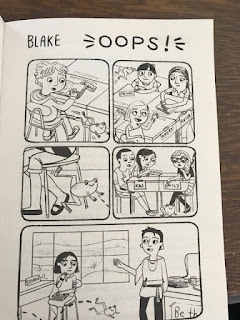
Henry plans to be a movie writer/director, so his entries are all told in script form complete with stage directions
Cecelia has decided to write her journal entries as letters to her abuelita, so they are a mix of English and Spanish with glossary entries as she pretends to teach her abuelita English words.
Kai has the fewest entries, but his are written as messages to the class frog (who jumps out of Blake's pocket in the opening scene and is adopted as a class pet). His are mostly updates on what is happening in the class.
Sarah was also really honest with the students about the difficulties of being an author and the uncertainties of a publishing life. She explained that for all her books that are published, she has at least again as many that were rejected, but she keeps writing because she loves it! She spoke about writing what she believes and how that sometimes comes into conflict with what publishers want.
As a writer, I am in awe of the creativity and work that was required to produce such a stunning array of characters. Just like I spoke about in my post last month, I am reminded that children's books can be a great source to study for writing tips.
March 20, 2022
Don't Coddle Your Darlings! Using Conflict in Our Stories
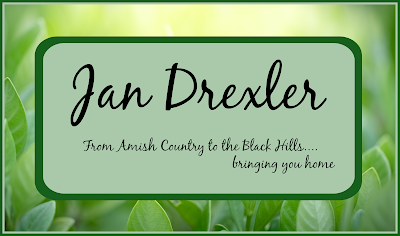
I'm sure you've heard about the importance of letting a butterfly fight its way out of a cocoon without help - they must struggle or they will die. The same with chicks breaking out of an egg. Hatching is a process in which the chick fights and struggles...and rests...while it matures enough to live outside the shell.
The point is - struggle is natural. It's healthy. It's how things grow.
Think of a baby learning to walk: There's your little darling, so wobbly on those fat stumpy legs! Do you coddle that sweet thing? Not if you're wise. You let them try to take a step - fall - and try another step. Before you know it, you have a toddler!
Why am I repeating myself here? Because almost every author goes through the same thing - we have trouble bringing enough conflict into our stories. Softheartedness and compassion will cause us to coddle our darlings, but we must not let ourselves do it!
If we don’t let our characters go through tough times we won’t have a story.
Think of some of the great stories you’ve read or seen as a movie – we’ll look at one that most of us know: The Lord of the Rings – the movie version.
When we meet Frodo, he’s a likable sort of lad. He likes to read (a big plus!) and he’s good friends with a wizard. Life is good for Frodo, and before we’re very far into the story, he’s the lord of the manor.
Wouldn’t you love to live in the idyllic Shire? One big advantage is that everyone expects you to be a little chubby!
Except that nothing much happens. If the entire movie – okay, the entire trilogy – stayed in the Shire, following the day-to-day lives of Frodo and his friends… *yawn* … Can you imagine the extended version? Nine hours of watching hobbits eat?
The story doesn’t start until conflict enters in the form of the Black Riders coming to the Shire to find the Ring.
In my February post, (you can read it here) we started outlining a romance story. Our hero and heroine were Benjamin and Heather (no relation to Benjamin and Heather Drexler.)
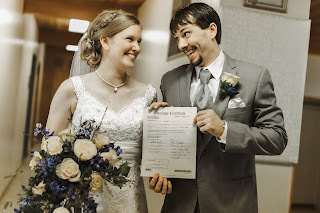 The day Heather Vetsch and Benjamin Drexler were married!
The day Heather Vetsch and Benjamin Drexler were married!I started the plotting (using mirrored plot points to create a chiasm) and our own Debby Giusti moved the story along by adding a couple more plot points.
In the beginning of our story, Benjamin works for a company that produces accessible community playgrounds. He has selected the perfect site for the new playground and all he needs is permission from the planning commission.

Heather is a teacher who loves children and wants the best for them. But she has heard about the planned playground and opposes it because of problems with the proposed site.
There’s the beginning of the conflict.
Remember, as much as we like our hero and heroine, we can’t coddle our darlings. We must ramp up the conflict.
Will our characters suffer? Yes.
Will they be better and stronger because of the suffering? Yes.
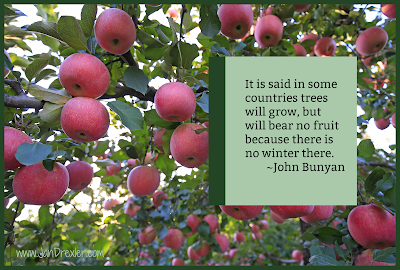
So, how do we find right conflict for these characters?
This is where character development comes in. We find the right conflict by delving into our characters’ pasts. We need to determine what happened in their past to give them a memory that they stuffed deep into a hole in their minds and won’t bring out again – until they’re faced with a situation that breaks their carefully constructed life into pieces.
One super-helpful resource for this process is The Story Equation by Susan May Warren.
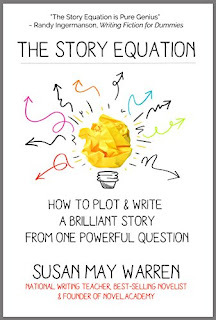
For Heather, it’s her dad’s death. He worked at the battery plant that was once on the piece of land earmarked for the playground. She is convinced that the cancer that killed him came from years of working in the toxic environment of the plant, but can’t prove it. Her goal is to prevent the city from using that piece of ground for anything until she can convince the EPA to test the area for lingering toxins.
For Benjamin, it’s his little brother who was born with spina bifida. His passion is to build playgrounds that are accessible for all kids. He has watched his brother shoved to the sidelines because there was no way for him to play safely while confined to a wheelchair. His goal is to provide a place for kids like his brother to have fun.
Do you see how their goals are heading in different directions? When they collide, that’s conflict!
And as the story goes along, there will be one conflict after another – just when we think we’ve reached a resolution, another twist comes along and ramps the conflict up again.
Meanwhile, as our characters face these conflicts they are growing and changing. Making decisions and living with the consequences. And by the end of the story, coming to a satisfying resolution.
Next month we’ll talk about resolving conflicts, and how some of the consequences of those resolutions can lead to more conflict.
Creating conflict for our characters is one of the hardest things for an author to do, especially when we're just starting out. But can never let ourselves be tempted to coddle our darlings!
Have you faced this problem in your writing? How did you solve it?
March 19, 2022
Sunday Scripture & Prayer Requests
THIRD SUNDAY OF LENT
 Jan Luyken etching of the parable, Bowyer Bible, Bolton, England.
Jan Luyken etching of the parable, Bowyer Bible, Bolton, England.
Free Art License
Some people told Jesus about the Galileans
whose blood Pilate had mingled with the blood of their sacrifices.
Jesus said to them in reply,
“Do you think that because these Galileans suffered in this way
they were greater sinners than all other Galileans?
By no means!
But I tell you, if you do not repent,
you will all perish as they did!
Or those eighteen people who were killed
when the tower at Siloam fell on them—
do you think they were more guilty
than everyone else who lived in Jerusalem?
By no means!
But I tell you, if you do not repent,
you will all perish as they did!”
And he told them this parable:
“There once was a person who had a fig tree planted in his orchard,
and when he came in search of fruit on it but found none,
he said to the gardener,
‘For three years now I have come in search of fruit on this fig tree
but have found none.
So cut it down.
Why should it exhaust the soil?’
He said to him in reply,
‘Sir, leave it for this year also,
and I shall cultivate the ground around it and fertilize it;
it may bear fruit in the future.
If not you can cut it down.’”
Luke 1:1-9
The Seekerville bloggers are praying for YOU and for our entire blog community. If you have any special intentions that need additional prayer coverage, leave a request for prayer in the comment section below.
Please join us in praying for our country, for the people of Ukraine, for an end to Russian aggression, and for the protection of our military.GOD BLESS THE USA!
We are so grateful for all of you—for your friendship and your support!
May the Lord bless you and keep you safe.
March 18, 2022
Weekend Edition


If you are not familiar with our giveaway rules, take a minute to read them here. It keeps us all happy! All winners should send their name, address, and phone number to claim prizes. Please send to Seekerville2@gmail.com. If the winner does not contact us within two weeks, another winner may be selected.
Monday: Carrie
Wednesday: Debby Giusti blogged about "THE WRITE ATTITUDE!" She decided to do two giveaways instead of one! The winners of digital copies of SMUGGLERS IN AMISH COUNTRY are Jackie Smith and Sandy Smith! Congrats to both winners!
Friday: Winnie gave us Part 2 of her series on writing Book Blurbs. The winner of her giveaway of any book from her backlist is Kathy Bailey

Monday: Jan Drexler will be talking about conflict in our stories. Why is it necessary? How do we find the right conflict for our characters?
Wednesday: Cate Friday: Pam

SMUGGLERS IN AMISH MOUNTAIN,a PUBLISHERS WEEKLY BESTSELLER for two weeks,is still available!

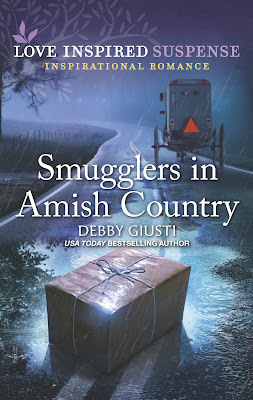
Order on Amazon!
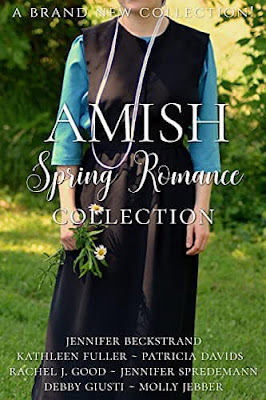
The AMISH SPRING ROMANCE COLLECTIONis still available. Get your copy soonbefore the price goes up!
Order your copy of AMISH SPRING ROMANCE COLLECTION here: https://www.amazon.com/Amish-Spring-Romance.../dp/1940492696
Take part in
Buggy Book Bingo,
running until March 30. The grand prize is a $100 gift card!
Learn more by visiting the Amish Spring Romance Facebook site.
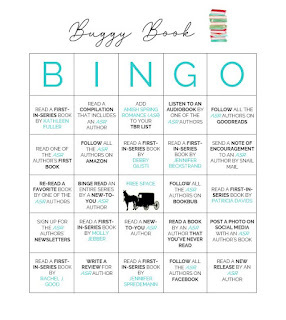

How To Know When You're a Successful Author by KM Weiland at Helping Writers Become Authors
The Best Way Writers Can Building Your Brand by CS Lakin at Live Write Thrive
Win A Bundle of Inspirational Romance at BookSweeps
A Tale ofAbout Not Giving Up by James L. Rubart at Learn How To Write A Novel
The Making of a Successful Author by Philippa Werner at Book Brush Blog
Things I Wish I Knew Before I Published, pt III by Lynette M Burrows at Writers In The Storm
Spinning a Yarn Out of History by EC Ambrose at Writers Helping Writers
Tips to Develop an Ear for Writing Dialogue by Edie Melson at The Write Conversation
Research to Right the Wrongs...and Mary Poppins by Lee Lofland at The Kill Zone Blog
Miranda: I Know My Rights by Lee Lofland at The Graveyard Shift
75 Special Events to Make Your April Newsletter Shine by Meg at MailerLite blog
What Every Author Website Needs (podcast) by Kristine Adams at The Writer's Cookbook
Don't miss the Writer's Inside edition March 2022 by Tina Radcliffe! Sign up to receive monthly updates on what is happening in the Christian Publishing world!
March 17, 2022
Writing the Book Blurb - Part 2

Hello everyone, Winnie Griggs here. Back in January I posted about writing book blurbs (you can read that post HERE) and promised you a Part 2. So today I'm delivering on that promise.
First a caveat - this is just my thoughts on what makes up a good blurb. There are likely other methods that are as effective if not more so.
First let’s talk about what goes into a blurb.
I consider that these the four components are the minimum of what you need.to create an effective blurb.
For the purposes of this series of posts, I’m going to use the blurb from the first book I had to craft a blurb for all on my own. We’ll look at what I did right, what I did wrong, and what I might do differently today. It’s for my book The Unexpected Bride, an April 2019 release. It reads as follows:
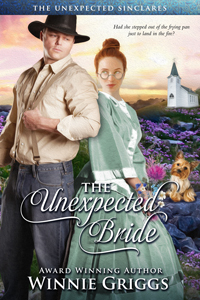 Fleeing an arranged marriage, socialite Elthia Sinclare accepts a governess position halfway across the country. But when she arrives in Texas she finds more than she bargained for - more children, more work and more demands. Because Caleb Tanner wants a bride, not a governess. But marrying this unrefined stranger is better than what awaits her back home, so Elthia strikes a deal for a temporary marriage. She says I do and goes to work—botching the housework, butting heads with her new spouse, loving the children.
Fleeing an arranged marriage, socialite Elthia Sinclare accepts a governess position halfway across the country. But when she arrives in Texas she finds more than she bargained for - more children, more work and more demands. Because Caleb Tanner wants a bride, not a governess. But marrying this unrefined stranger is better than what awaits her back home, so Elthia strikes a deal for a temporary marriage. She says I do and goes to work—botching the housework, butting heads with her new spouse, loving the children. Caleb isn’t sure what to make of this woman who isn’t at all what he contracted for—she’s spoiled, unskilled and lavishes her affection on a lap dog that seems to be little more than a useless ball of fluff. But to his surprise she gets along well with the children, works hard to acquire domestic skills and is able to hold her own with the town matriarchs.
Could the mistake that landed him with this unexpected bride be the best thing that ever happened to him?
So today I want to dig into the first component.
The Tagline.
Technically, the tagline is optional, but I think having one adds a little extra punch to your blurb. The Tagline, also called a log line, is a very short teaser, designed to hook the reader and introduce the tone of the book. There are several different ways to approach this.
You can do the A meets B format. Here’s an example
Jane Austen meets Sherlock Holmes in this new Regency mystery series
(from Erica Vetsch’s Jan 2022 release The Debutante’s Code)
Another version of this format is to simply reference to the genre/tropes you’re mashing together – i.e. A regency era female turns detective in this new mystery series. (My apology to Erica if I didn’t properly capture the tone of her book)
You can pose a question, as in this one
As her plans unravel, can she give her children what they truly need?
(from Mindy Obenhaus’s Nov 2021 release Their Yuletide Healing)
Then there’s the contrast method.She mixed danger, desperation, and deception together. Love was not the expected outcome.
(from Mary Connealy’s March 2022 release The Element of Love)
And lastly, you can simply showcase the heart of the story as was done in the blurb for my upcoming May 2022 release Her Amish Springtime Miracle.
In this delightful and heartwarming novel, an orphaned baby brings together an unlikely couple who learn the true meaning of family.
Unfortunately, I didn’t include a tagline for The Unexpected Bride (shame on me!). So if I were to try to craft one today, how would I go about it? Well, let’s see how it might look using each of the four methods above.
Using method one: A runaway heiress must serve as housekeeper and nanny in this accidental Mail Order Bride story
Using the second method: Can a klutzy socialite who ends up far from home provide the care and love six orphaned children and their determined uncle so desperately need?
Using the third method: She ran away from home to escape an unwanted engagement. So how did she end up agreeing to marry a disagreeable stranger?
And using the last method: In this heartwarming story, an inept runaway socialite must build a loving home for six orphaned children and their much too serious uncle.
So which one would I actually use? The test would be which one I thought provides the best hook while remaining true to the story. Right now I'm thinking it would be the third one.
A couple of tips:
Just because the tagline appears at the top of your blurb doesn’t mean it needs to be created first. If you’re having problems figuring it out, craft the rest of your blurb first and then come back to it. Hopefully the key tone and story essence you want to convey will pop out to you then To figure out what part of your book would make the best hook, ask yourself what is most unique or interesting about your story.

There you have it, my notes on how to craft your book blurb’s tagline. Next time we'll look at the second component, the characters.
So do you have any questions? Do you agree with this approach? Would you have chosen (or crafted) a different tagline for TUB than the one I chose?
Leave a comment to be entered into a drawing for a book from my backlist
And if you're interested in learning more about The Unexpected Bride or ordering a copy, click HERE
March 15, 2022
THE WRITE ATTITUDE REVISITED
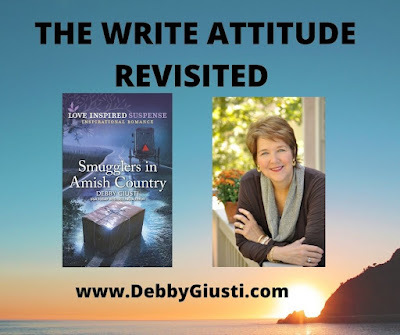 By Debby Giusti
By Debby GiustiDear Friends, I wrote this blog in 2008 and recently found it as I was scrolling through an old file on my computer. In this time of uncertainty, I thought it might bolster our determination, reaffirm our sense of purpose and help us to focus on the positive in spite of the military aggression against the Ukraine, talk of Resetting the World Order, the threat of nuclear attack and escalating inflation. Two years since the lockdowns began, Covid seems to be waning, but the globe is awash with discord, and conflict abounds.
When the world is in a state of flux, sometimes looking within can bring peace and harmony. So today, I offer this short reflection that, hopefully, will help us focus on our writing journey, whether we’ve only begun our pilgrimage to publication or whether we’re established authors with a sizeable backlist. The Write Attitude can apply to other areas of our lives, as well. Perhaps we’re raising children and need affirmation, or struggling with a new job, or going back to school for an advanced degree, or overcoming a physical challenge or medical disability—whatever the situation, our attitude can make the difference between success and failure. So today, no matter what road we’re on, let’s strive to do our best and leave the world a better place because of our Write/Right Attitude.
What makes the difference between a person who moves forward with their writing despite rejection and those who give up and forsake their dream?
Attitude.
Hymen’s is a restaurant located on Meeting Street in Charleston, South Carolina’s historic district. It’s a no-frills type of place that specializes in great seafood and quality service. Everyone who’s employed there—from the Hymen brothers who own the business to the busboys and dishwashers—work hard to uphold the excellent reputation that keeps customers coming back year after year. Attitude is so important at Hymen’s that the company policy, a short piece written by Chuck Swindoll, is given out to everyone who comes through the door.
The longer I live, the more I realize the impact of attitude on life. Attitude, to me, is more important than education, than money, than circumstances, than failures, than success, than what other people think or say or do. It is more important than appearance, giftedness, or skill. It will make or break a company. . . a church. . . a home. The remarkable thing is we have a choice everyday regarding the attitude we embrace for that day. We cannot change our past. . . we cannot change the fact that people act in a certain way. We cannot change the inevitable. The only thing we can do is play on the one string we have, and that is our attitude. . . I am convinced that life is 10% what happens to me and 90% how I react to it. And so it is with you . . . we are in charge of our attitudes. ~Chuck Swindoll~
I keep my copy of Swindoll’s words near my computer as a reminder of the importance of having the right mindset in this industry.
Yes, even published writers worry. Will the editors like the next story idea? Will I finish my current work in progress on deadline? Is my writing improving?

Cameron advises countering the negative by writing positive phrases over and over again on a sheet of notebook paper, just as a child would do who’s been disruptive and has to copy I will not talk in class fifty times. The repetition arms us with ammunition to shoot down the negative inner rhetoric so positive progress can be made.
A Nike advertisement provides the following words of encouragement:
All your life you are told the things you cannot do. All your life they will say you're not good enough or strong enough or talented enough; they will say you're the wrong height or the wrong weight or the wrong type to play this or be this or achieve this. They will tell you no, a thousand times no, until all the no's become meaningless. All your life they will tell you no, quite firmly and very quickly. And you will tell them yes! ~Nike ad~
Frank Soldovere was a great man and good friend who worked hard to make this world a better place. Everyone who attended his funeral was given a card with the following passage by Theodore Roosevelt:
It is not the critic who counts, not the man who points out how the strong man stumbled, or where the doer of deeds could have done better. The credit belongs to the man who is actually in the arena; whose face is marred by the dust and sweat and blood; who strives valiantly; who errs and comes short again and again; who knows the great enthusiasms, the great devotions and spends himself in a worthy cause; who at the best, knows in the end the triumph of high achievement, and who, at worst, if he fails, at least fails while daring greatly; so that his place shall never be with those cold and timid souls who know neither victory or defeat. ~Theodore Roosevelt~

Attitude—the Write Attitude—makes the difference between someone who wants to write and someone who does.
Does the world situation have bearing on your motivation and determination? Do you struggle to keep a positive attitude in these days of global strife? As Christians, we trust in the Lord and know that He is in control, but in addition to prayer, what other steps can be taken to improve our attitude? Leave a comment to be entered in a drawing for a digital copy of SMUGGLERS IN AMISH COUNTRY, a Publishers Weekly Bestseller for two weeks in a row!
Wishing you abundant blessings!
Debby Giusti
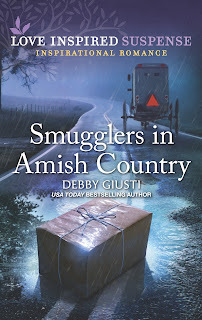
SMUGGLERS IN AMISH COUNTRY
Uncovering secrets in this Amish town
could deliver deadly consequences.
When the robbery suspect she’s tracking begins attacking delivery girls in Amish country, officer Marti Sommers must go undercover as bait. With ex-cop Luke Lehman’s niece as one of the targets, this case is personal. After all, Marti’s rookie mistake ended with Luke injured and another officer dead. But can the two former colleagues stop a deadly smuggling ring…before Marti becomes the next victim?
Order on Amazon!
Still Available: THE AMISH SPRING ROMANCE COLLECTION. Order your copy HERE!
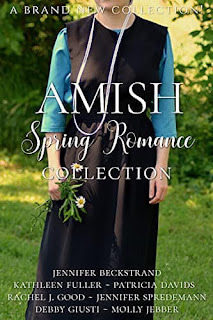
March 13, 2022
What Makes a Reader Try a New Author?
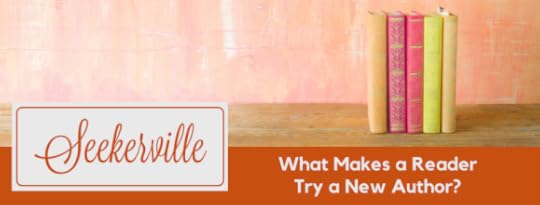 Happy Monday! Let's not speak of the torture that is Daylight Savings Time weekend and just jump right into today's topic, shall we? :)
Happy Monday! Let's not speak of the torture that is Daylight Savings Time weekend and just jump right into today's topic, shall we? :) In my various roles as blogger, reviewer, influencer, and publicity tour company owner, I have the privilege of chatting with a lot of authors. A question that comes up frequently is 'what can I do to get my book in front of new readers?' In all honesty, sometimes I think that answer is different from reader to reader ... and from book to book. What works for one book/author/reader may not work for the next. Authors, this is probably not news to you. But if we filter through the various answers I think we can find some helpful common ground.
And since I just got done saying that the answers can differ from reader to reader, I thought I'd ask some readers for their thoughts. (Occasionally I have a brilliant idea haha) I started by reaching out to several of my blogging/reviewing/avid reader friends to get their thoughts.
Jessica Baker of A Baker's Perspective: First and fastest answer I have is a recommendation from a reader friend. There are several people in our bookish community that I know if they liked the book, I'll like it too. More than that, I just love the adventure of trying a new author. I will actually search the bookstagram community, or just visit my favorite online book sources and search for new releases. Once I find a book by an author I haven't read before, I'll check out the book blurb. If it pulls me in, I'll give it a go. I have found so many new authors this way. (so basically know this authors - have a strong book blurb!) Suzie Waltner of Remembrancy: I’m usually willing to give a new-to-me author a try because I’ve found some hidden gems by taking a chance on someone. The first thing that piques my interest in trying a new author is the back cover blurb. If the book features something I enjoy reading (favorite genre or trope, a new setting, an intriguing plot, interesting characters, etc), I’ll try that author. The next thing that makes me read a new author is word of mouth. If I’m hearing about a book from other readers or seeing it often online, I’m interested enough to go read that back cover and a few of the reviews. And if both the blurb and word of mouth are building on each other, it’s a book I will automatically read. Also, if that book is in audiobook format, the book will get bumped to the top of my list as I am a reader who can listen to books while I’m at my day job and make a nice dent in my TBR.
Connie Hill of Reflecting on Days Gone By: I have found some really amazing authors by word of mouth. I love subscribing to authors' newsletters and I’ve noticed they will put in their newsletter what they are reading. I like to know what they are reading. I also find new authors through social media. When someone posts about a book they are raving about it makes me want to read it. As a book blogger I’ve been fortunate to discover so many authors I may not have been exposed to before. I love when I get to partake in an author's first release. It makes me feel like I’m an important part of the journey.
Becca Rae of The Becca Files: There's lots of reasons I would try a new author. Word of mouth is gold, but that also has to start somewhere. Baker Book House has been running preorder sales for quite a while now and I have been known to scroll the "coming soon" section looking to add to my cart (because one almost never buys only one book at a time of course 😉 ). At this point I will confess to judging the book cover. I have found several new authors simply by the cover drawing me in and then reading the blurb. The one that comes to mind to me first for this recently is Jennifer L Wright's If It Rains. It wasn't the most flashy cover, but it tugged at my heart. As a reviewer, I find out about a lot of new releases through JustRead and also see the posts splashed all over social media. The more a new author can get out there, the more likely they are to be seen and talked about. I also follow publishers so will hear about the new authors through that chain as well. I fully admit that I am more likely to try a new author when they come from a publisher I already respect. If not, I'm more likely to need to see what others are saying before I'm willing to take the risk. It also needs to be said that the subject matter is what will catch my attention as well. I am largely an avid historical fiction reader. So I'm more likely to try a new author in that genre. But I like books. So like I said, word of mouth is gold and if other readers have said they enjoyed a new author then I'm more likely to give them a shot.
Beckie Burnham of By The Book: Trying a new author has some risks, but often great rewards. I’m always on the look out for something new, and a new-to-me author with a unique setting or subject matter is tops on my list. Whether it’s an exotic locale (A Tapestry of Light by Kimberly Duffy) or a new twist on a favorite genre (The Gryphon Heist by James R. Hannibal) I love stretching my reading horizons. A new author does that for me.
Crystal Caudill of Crystal Caudill.com: Once a new to me author has been brought to my attention I do several things, especially where I have to be so careful with my limited reading time. First I look at the cover, especially if it is indie. You can tell how much someone values their work by the quality of the cover. It doesn’t have to be perfect, but it better not look slapped together. After the cover, I flip to the blurb. It has to be well written, grab my attention and leave me with questions without summarizing the story. After that, I read a sample through the look inside feature of Amazon or, if I’m in a bookstore, I’ll skim a bit from the beginning, middle, and end. This is really the make it or break it deal for me. Quality writing is what matters most to me. If there is no Look Inside feature, I’m really hesitant. Then I go based on who recommended the book and how much I think our tastes align. The other way I’ve found new authors is though the peer pressure of book challenges and book clubs. Apparently, the DARE strategy doesn’t work against books.
(By the way... speaking of trying new authors... make sure you keep an eye out for Suzie Waltner's new novel Midnight Blue - a second chance/secret child contemporary romance releasing July 5, 2022 from Anaiah Press. And grab Crystal Caudill's debut novel, Counterfeit Love - a Gilded Age romantic suspense that releases TOMORROW (March 15th) from Kregel!) As you can see, even with the variety of answers & readers above, there are some common things that will lead to a reader trying a new-to-them author. If you look at the phrases I bolded, you'll see repeated elements such as:word of mouthrecommendations from trusted readerssocial mediabook coverbook blurb/subject matter/setting But then I got even more curious about what other readers would say. For instance, if I polled a bunch of different readers who like different types of books and aren't necessarily part of the blogging community, would I get similar results? After all, if I'm going to recommend that you dear-to-me authors try such-and-such to get your books in front of new readers, I need to know that these things go beyond book influencers. To make sure they stand true even when someone isn't inundated with books to review, feature, etc.
So. I did.
I asked two questions on a Google Form and shared it on Facebook. Most of the respondents are my friends and family (though some people shared it to their networks as well), and based on the people who told me they answered the questions they represent a wide variety of reading habits & tastes.
Out of 280 responses (way more than I anticipated answering - yay!):30.7% said word of mouth is what most causes them to try a new author; 25.6% said it was the book cover or blurb;16.2% said it's reviews from trusted bloggers/bookstagrammers; and
11.6% said that social media posts most influence them to try a new author.One thing I found interesting was how little newsletters & reviews on retail sites seem to be the dominant factor for a reader to try a new author - only 5.8% for retail site reviews & only 1.4% for newsletters. This is not to say that there is no value for either of these in an author's marketing strategy - because publishers who know way more than I do seem to put so much stock in them both - but perhaps the value of these factors as far as putting your books in front of new readers is much less than we realize.
Another interesting (to me) result is that, while I did not include it in my initial list of options, several people also wrote in 'endorsements' as the most significant factor in trying a new author. Most of the other write-in answers were similar enough to the options above (for our purposes) that I tossed them in with those respective categories.
I know that's a lot of info and numbers, and maybe you're like me and your eyes start glazing over when math is involved. So, let me give you a quick summary that you can add to your author tool-box:
When asked for the single most influential factor that causes them to try a new author, over 75% of the readers polled pointed to 'word of mouth' (which includes social media posts & trusted reviewer recs) and 'book cover/blurb'.
What are some practical ways you can harness this info to work for you?If you are indie publishing, invest in a professional cover & run your back cover copy (and even the cover) by several trusted readers to gauge their interest level & strengthen it accordingly. These two elements to your book are the first impression you give to readers. The cover (front and back) can make or break a reader's decision to pick up your book - spend time there accordingly.
Look for ways to drum up word of mouth recommendations. Invest in a blog tour or social media tour with a company like JustRead Tours or start a grassroots campaign on your own to keep people talking about your book. Get that book cover that you've invested in onto social media. Reach out to bloggers who review in your genre and ask them for a feature. Some may not have time for a review, but even a spotlight/excerpt or author interview can get that word of mouth machine working. What about you? Did these reader results surprise you? What's something you've done to increase word of mouth buzz that worked for you & your books?

Carrie Schmidt is an avid reader, book reviewer, story addict, KissingBooks fan, book boyfriend collector, and cool aunt. She also loves Jesus and THE Story a whole lot. Co-founder of the Christian Fiction Readers' Retreat and JustRead Publicity Tours, LLC, Carrie lives in Georgia with her husband Eric. She can be found lurking at various blogs and websites (because she can't stop talking about books) but her main home is the blog she started in 2015 - ReadingIsMySuperPower.org.



